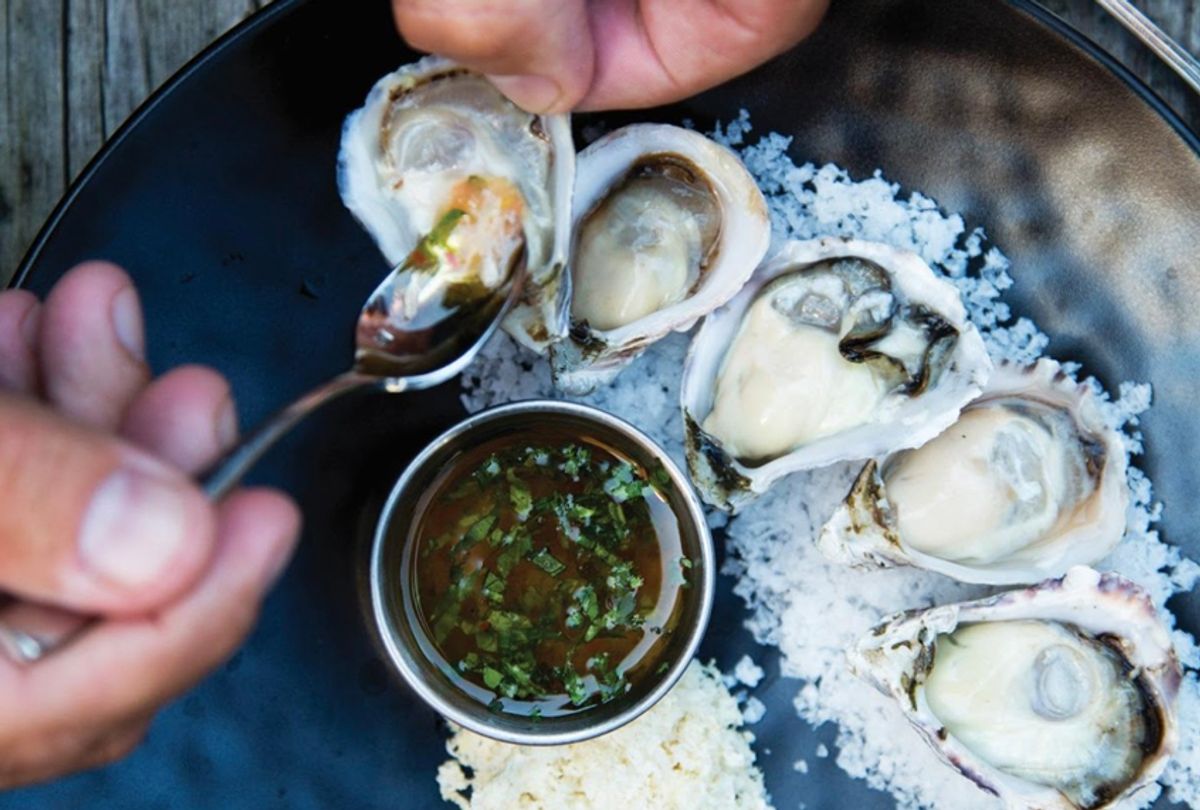Excerpted with permission from Simply Fish by Matthew Dolan. Photography by Anne-Claire Thieulon. Copyright 2018 by Skyhorse Publishing, Inc.

Chef Matthew Dolan offers his own collection of stories and delicious fish and seafood recipes for a great variety of appetizers, main courses, sauces, side dishes, and desserts—even adding a scattering of wine pairing suggestions along the way. In Simply Fish, you will learn how to cook healthy and delicious fish for every season, from casual and quick get-togethers to the adventurous larger gatherings.
what to ask the fish guy
Ask when the oysters were harvested. By law, they must keep shellfish tags on hand, so they should be able to assist. If the harvest date is more than five days ago, don’t buy them. This doesn’t mean they are necessarily bad, but the quality may be lesser. Unless you are visiting an oyster farm in Marshall, California, the likelihood of getting same-day oysters is slim. Up to four days is normally fine.
Recipe: Oysters on the Half Shell
with winter citrus mignonette, basil and horseradish
Serves 6
2 ounces grapefruit juice
2 ounces lime juice
2 ounces orange juice
1 Tablespoon black pepper, coarsely ground
1 Tablespoon raw shallots, minced
1 teaspoon thyme leaves, destemmed
1 Tablespoon basil leaves, sliced
1 teaspoon fresh horseradish, grated
18 oysters of your choice
Lemon wedges, for garnish
what to drink
- Melon de Bourgogne
- Champagne
- Lager-style beer
- Gin and sparkling lemonade served over ice
method
Combine all ingredients except the oysters and lemon wedges and let them sit for at least 30 minutes—this is your mignonette. Wash the oysters while the mignonette is steeping, a process which allows the flavors to marry perfectly and soften the shallots. Many hardware stores and grocery stores carry “nail brushes.” They double nicely as an oyster scrubber, but any medium to firm bristle-scrubbing brush will suffice. Under running cold water, scrub the oysters individually, focusing on the seam where the two shells meet. It doesn’t need to be perfect, as a little sand won’t hurt you.
When the oysters are washed and scrubbed, it’s time to shuck. Please keep in mind the minimum resting time for the mignonette. It is best to refrigerate the cleaned oysters and allow for the mignonette to be ready. Use a kitchen towel to hold the oyster in place, and find the joint or small opening at the thickest end of the oyster where the two shells meet. Place the larger side of the oyster on a table, still using a towel to protect your hand and allow for a firm grip. Gently place the tip of an oyster knife into this joint. Wiggle it in until it clearly stops, and press down on the oyster to pop the top shell open (similar to opening a can of paint). Once it pops open, use the oyster knife to scrape it along the inside surface of the shell to cut the oyster away from the shell. Try not to lose any of the liquid—it is delicious! It is always best to serve them on ice so they remain cold, and the mignonette should be served on the side with a small spoon so that people can take as much or as little as they wish. That’s it!
plating
On any plate, a linen, some lettuce, or a towel can be set first to help the ice and ultimately the oysters from sliding off the plate. Crush some ice and fill the plate generously. Set the oyster shells down on top of the ice, and serve the mignonette on the side. It’s usually a good idea to have lemon wedges available as well.

Shares